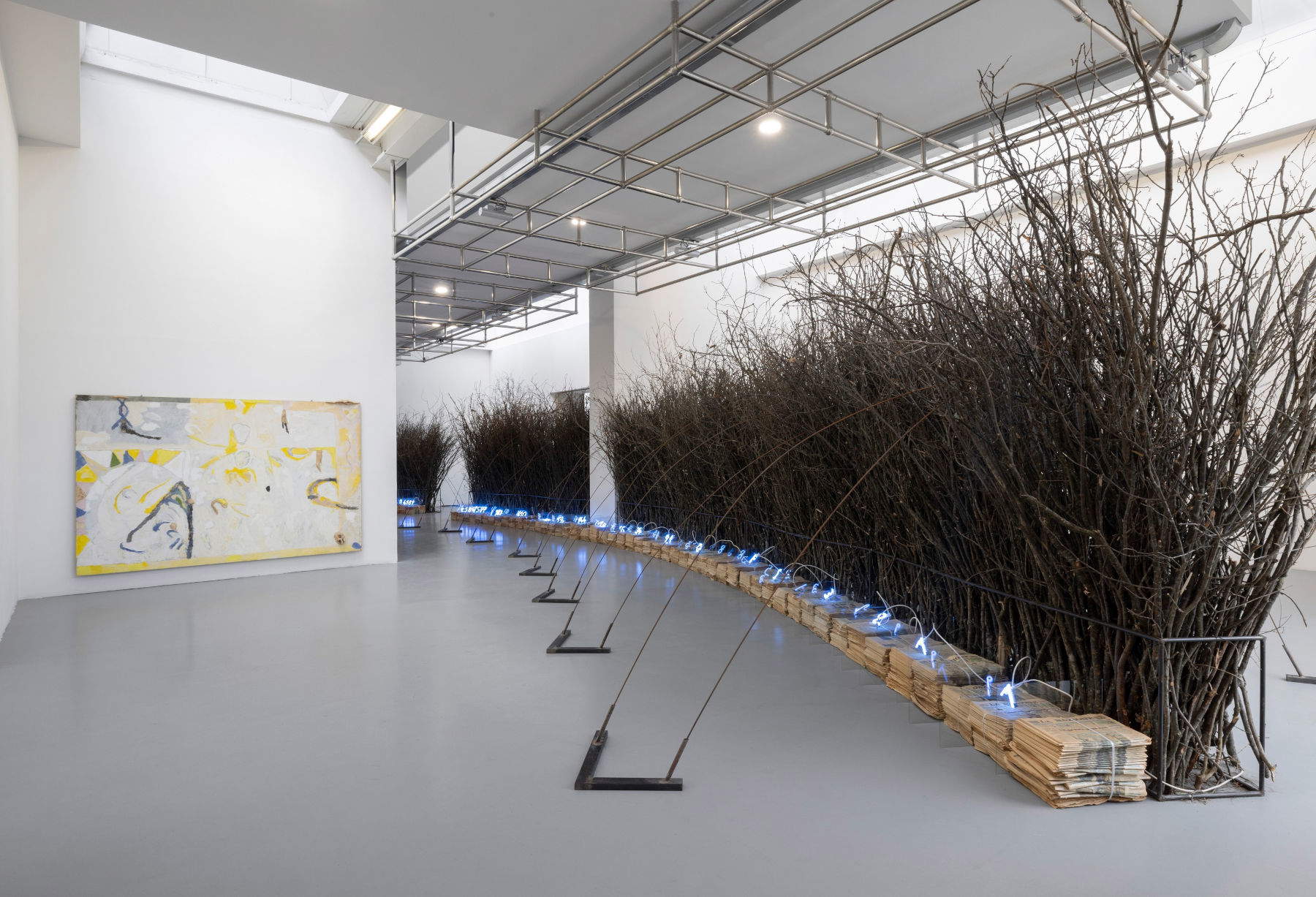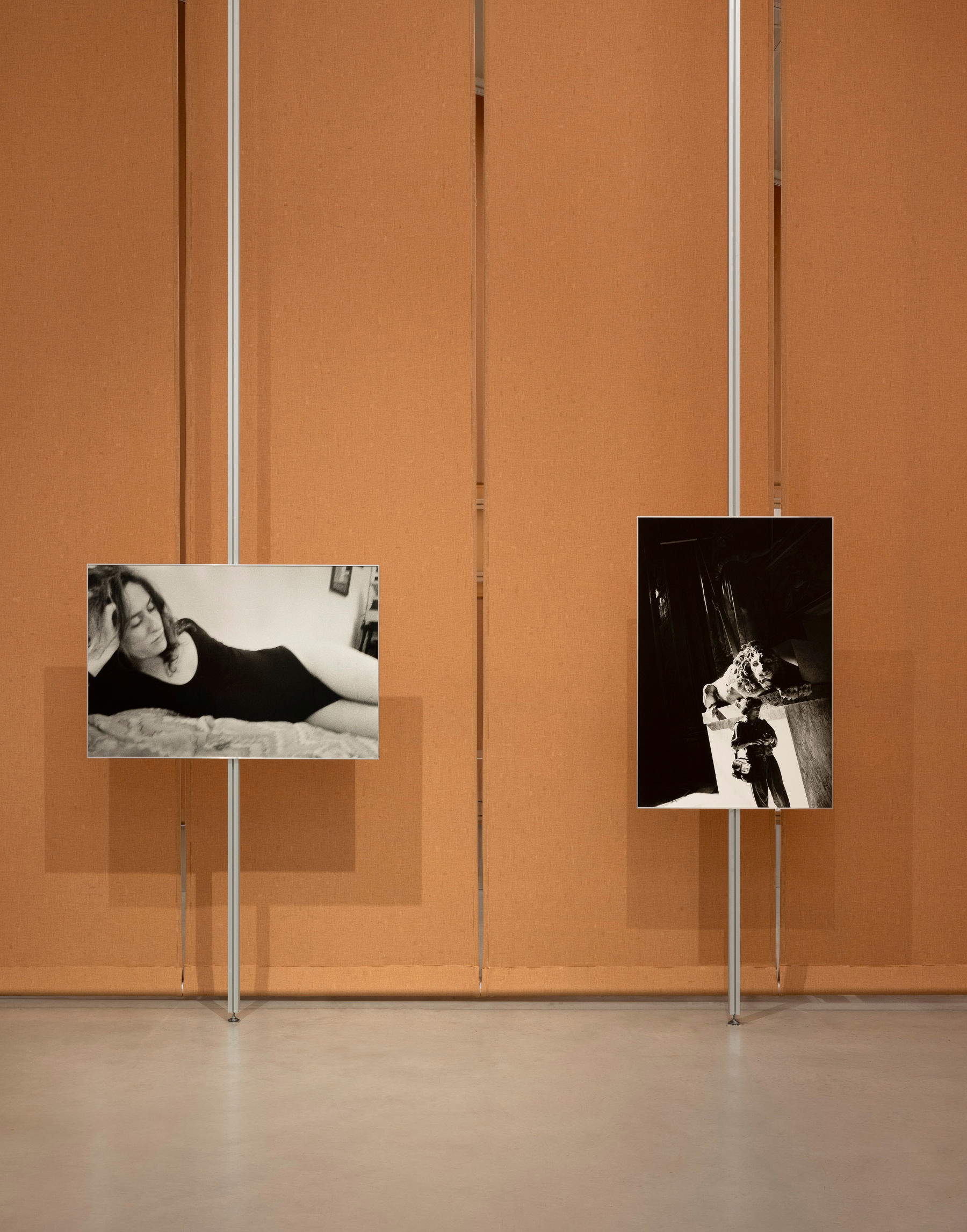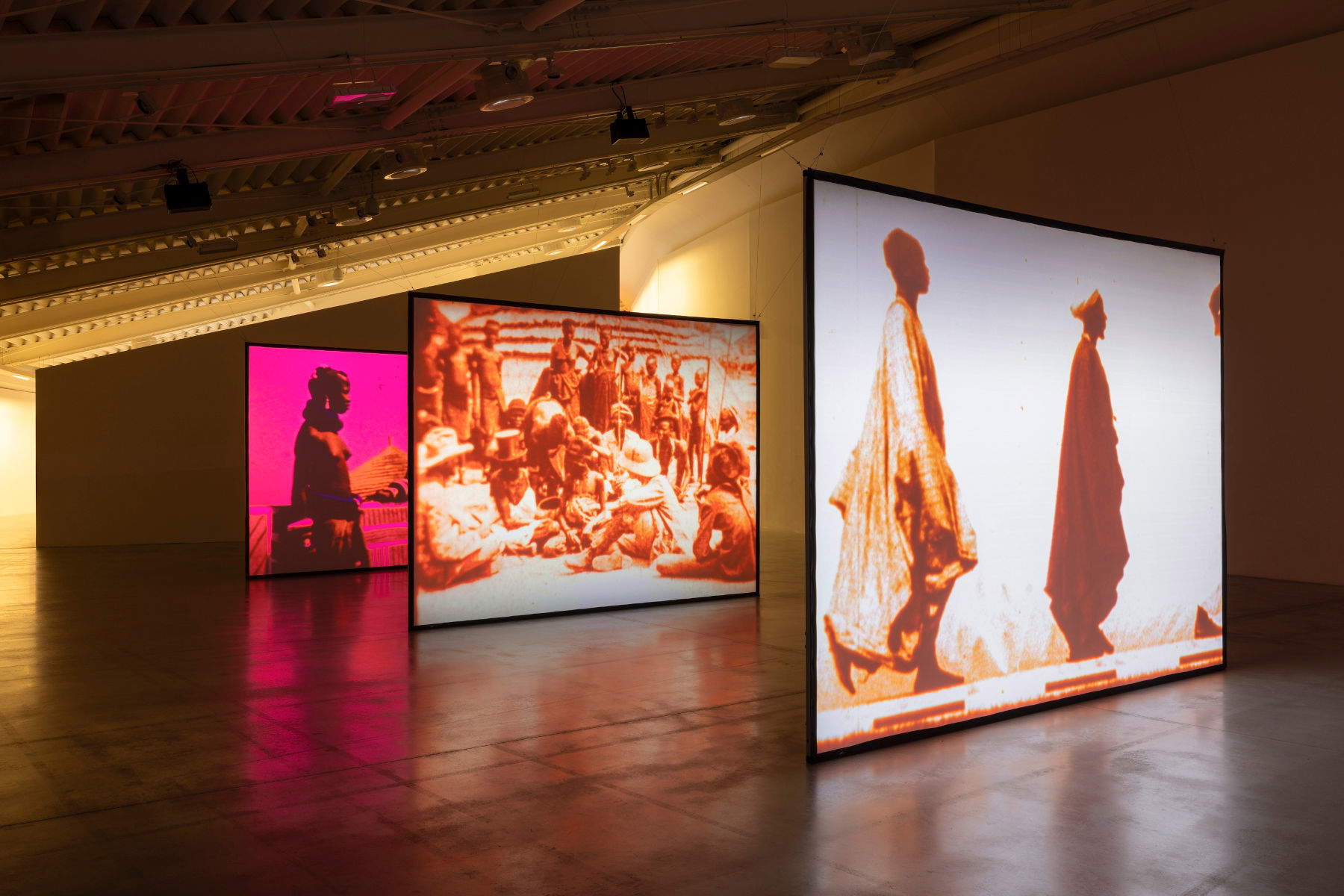Starting May 31, the Luigi Pecci Center for Contemporary Art in Prato will inaugurate three new exhibitions that dialogue with each other according to radically different perspectives, but united by the common intent to interrogate the present through the forms and spaces of art. SMISURED. XXL Works from the Pecci Center’s Collection, a project of the Center curated by architect Ibrahim Kombarji, brings back to the stage the large-format works from the permanent collection, often absent from the exhibition routes for logistical reasons; La marcia dell’uomo, a video installation by Yervant Gianikian (Merano, Italy, 1942 and Angela Ricci Lucchi (Lugo di Romagna, Italy, 1942 - Milan, 2018) recently entered the collection thanks to the PAC 2024 call, addresses the shadows of Italian colonial history; while Light Lights, the first solo exhibition in an Italian institution by Davide Stucchi (Vimercate, 1988), explores the theme of light with subtle irony and a minimal use of the artistic gesture.
“The Pecci Center,” says Ilaria Bugetti, mayor of Prato, “confirms itself as the place of excellence in the contemporary art scene thanks to the enormous heritage of works it showcases in its new installations. The architectural features of the Pecci, which are unique in Italy, with its large rooms in the Gamberini area and the more recent Nio rooms allow the exhibition of works from the Collection of large dimensions, often created specifically for the Pecci. In addition, with these new three exhibitions, we highlight how the Center’s holdings are continually evolving, thanks in part to recent private donations and acquisitions through the support of the Ministry of Culture-Directorate General for Contemporary Creativity. These are new works that expand the collection and become available to the entire community. A source of pride for our city, three displays that will allow visitors to learn about our contemporary identity in a Center that is alive even during the summer period.”
“This is another significant step in the journey of the Pecci Center,” stresses President of the Region of Tuscany Eugenio Giani, “which in this way demonstrates its vitality and its ability to offer new opportunities to meet with contemporary art and new looks at our world. Be it the video work ”The March of Man“ by Yervant Gianikian and Angela Ricci Lucchi, which while taking us back to the Africa of colonialism offers a different experience of space redrawn by images; as well as of the exhibition ”Smisurata,“ which intends to repurpose large-format works from its collection, the Pecci Center is not just preserving art, but enhancing it, repurposing it, growing with the works on display.”
“With the new exhibitions,” comments Lorenzo Bini Smaghi, president of the Foundation for Contemporary Arts in Tuscany, “the Centro Pecci strengthens not only its attention to the enhancement of its artistic heritage as in the case of the exhibition ’Smisurata,’ which presents large-format works from the collection, but also continues in the discovery of young artists such as Davide Stucchi, a sculptor of light, at his first solo exhibition in an Italian institution. There is also no lack of attention to the recent and sometimes hidden past such as the video installation by Yervan Gianikian and Angela Ricci Lucchi that invites reflection on colonialism in Africa. Collections, Memories, Experimentations, paths that create community, take root in the territories and make the Pecci Center an institution with a strong international reach.”
“The new summer exhibitions,” said Stefano Collicelli Cagol, director of the Pecci Center, “restore the strong relationship that the Pecci Center has with its collection by presenting large-format works in continuity with the return of Prato 88 the large work by Mauro Staccioli in front of the museum entrance. They then continue the search for Italian talents with Davide Stucchi and explore topical issues such as the violence of men in the work of Yervant Gianikian and Angela Ricci Lucchi. With the theme Building Community, the Pecci Center continues to offer itself as a necessary space for confrontation with the emotions and questions that each work is capable of raising.”
SMISURED. XXL Works from the Pecci Center Collection, which can be visited until Sept. 8, stems from the need to give visibility to works that, due to their size and visual impact, hardly find space in the museum’s regular programming. Works that are “out of scale,” as the press release defines them, capable of imposing their physical and symbolic presence and reaffirming the public and participatory function of the collection. The project, conceived in close continuity with the Eccentrica permanent display, renews the idea of the museum as a collective space, accessible and open to confrontation between communities and languages. The installations, chosen and arranged by Kombarji in dialogue with the curatorial team, rethink the spaces designed by Italo Gamberini in the direction of inclusive fruition. The installation is naturally grafted into the existing visitor path, symbolically closed by Fabio Mauri’s Luna, already part of the collection. Among the artists featured in the exhibition are names such as Marco Bagnoli, Luca Bertolo, Lorenzo Bonechi, Enzo Cucchi, Caterina De Nicola, Karen Kilimnik, Willi Kopf, Jannis Kounellis, Lorenza Longhi, Mario Merz, Jacopo Miliani, Julian Opie, Mimmo Paladino, Paolo Parisi and Remo Salvadori.


Also starting May 31 and running through Sept. 14 is The March of Man, a video work by Yervant Gianikian and Angela Ricci Lucchi that officially enters the museum’s collection. Composed of three simultaneous large-scale projections, the work guides the viewer on a journey through nearly a century of filmic representations of Africa by colonial Europe, from the earliest nineteenth-century footage to the 1960s. The result is a critical montage that unmasks the West’s violent and deforming gaze, interrogating the power of archival images. The presentation will be accompanied by a film show in the museum’s cinema, dedicated to recurring themes in the work of the two artists, from world wars to exile to migration, thus restoring historical and political depth to a body of work that, though born more than two decades ago, continues to speak urgently to the present.

Closing the Davide Stucchi exhibition triptych . Light Lights, open until November 2 and dedicated to Davide Stucchi. The exhibition features a selection of works made between 2019 and 2025, with a focus on a series of light sculptures that question, with irony and discretion, the relationship between work, space and viewer. Far from any monumentalism, Stucchi works by subtraction: small interventions, often bordering on the invisible, that transform lamps and wall sconces into presences suspended between functionality and fiction. The title itself plays on the semantic ambiguity of the term “light,” evoking lightness and luminosity. Guiding the visitor is a subtle choreographic sense, a silent dramaturgy made up of sudden lightings, narrative gaps and suggested presences. Curated by museum director Stefano Collicelli Cagol, the exhibition firmly affirms the centrality of the poetic gesture even in the institutional context.
Davide Stucchi lives and works in Milan. His most recent solo exhibitions include those at Martina Simeti, in Milan (2024 and 2021), Deborah Schamoni (2020), Sundogs in Paris (2019) and Gregor Staiger in Zurich (2019). His work has also been presented in numerous group exhibitions, including those at Museion in Bolzano (2024), Palazzo Ducale in Genoa (2023), Fitzpatrick Gallery in Paris (2021), MACRO in Rome (2020), Quadriennale d’arte 2020 at Palazzo delle Esposizioni in Rome, Stadtgalerie in Bern (2020), Fondazione Sandretto Re Rebaudengo in Turin (2018), Kunstverein in Düsseldorf (2017), and the 16th. Quadriennale d’arte at the Palazzo delle Esposizioni (2016).

Yervant Gianikian, born in Merano in 1942 and living in Milan, is of Armenian origin and trained in architecture in Venice. Angela Ricci Lucchi, born in Lugo di Romagna in the same year and passed away in Milan in 2018, studied painting in Austria with Oskar Kokoschka. After settling in Milan, the two artists began a cinematic journey focused on critical reflection on the image and its ambivalent nature. Beginning in the mid-1970s, they embarked on independent experimentation, making performances with projections of “scented films” and, later, manually reworking archival materials through viraggies, slow motion and combined montages. Their works have been the subject of international retrospectives and exhibitions, including at MoMA New York, Cinémathèque Française, Centre Pompidou in Paris, Galerie nationale du Jeu de Paume, and Tate Modern in London. In 2015 they received the Golden Lion at the Venice Biennale for their contribution to the Armenian Pavilion.
 |
| Three new exhibitions at the Pecci Center in Prato between memory, light and monuments in the permanent collection |
Warning: the translation into English of the original Italian article was created using automatic tools. We undertake to review all articles, but we do not guarantee the total absence of inaccuracies in the translation due to the program. You can find the original by clicking on the ITA button. If you find any mistake,please contact us.